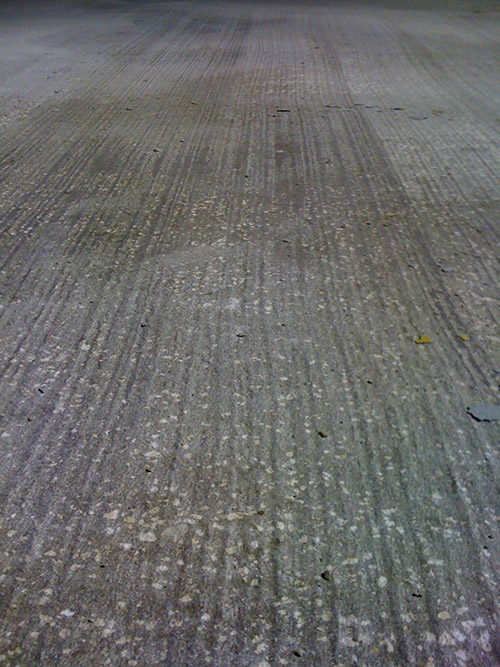















Scarification works by using steel and or carbide star shaped cutters mounted in rows with several rows around the perimeter of a rotating drum. The cutters come in several sizes and variations for different applications. With this drum machines can remove between ¼ inch and 2 inches in a single pass. Scarifiers are most often seen in the road construction business. They can be used for the removal of asphalt roads traffic lines, grinding down high spots and grooving the surface. Scarification is very effective in removal of old coating and resurfacers.

• Scarification excels at removing thicker coating and resurfacers.
• Scarification leaves an aggressive profile more so than shotblasting. This texture usually requires at least 1/8 inch of resurfacer to restore the surface to a smooth uniform texture.
• Cost of wear items such as cutters and supporting cages result in a high cost per square foot than most other removal methods and is of moderate speed in terms of operation.
• Scarifying is one of the old methods earlier used to level a floor and to prepare a concrete floor for further treatment. Scarifying creates a lot of dust and is very noisy. For this reason, scarifying is not suitable when regular business has to stay open as normal. Instead it requires a large area to be sealed off.
• There is a risk that grooves/lines can be seen through a newly laid covering if the floor beneath was prepared with scarifying. Many use self-leveling compound to try and hide this or otherwise the floor can be grinded after scarifying to remove these lines. Concrete scarifiers leaves an untreated surface of 7-9 mm to the wall, a surface that then must be treated in some other way.